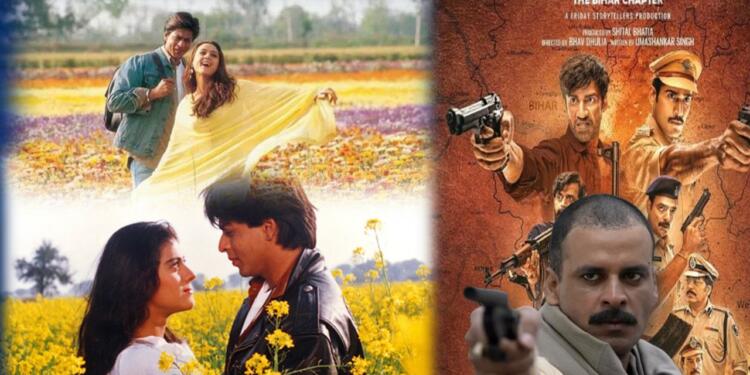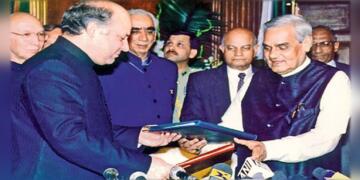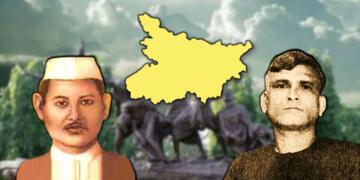Cinema has the power to propagate ideas, set narratives, define trends in society, carry the cultural heritage of a particular society and reach the common masses. Hindi cinema has done it all with ease. Since the advent of the Bollywood industry, Hindi cinema has been an integral part of every generation in the geographical sphere of India.
Be it idolising the star cast or getting carried away by the fascinating storylines and enthralling dialogues presented on the silver screen, we as the audiences have gone through it all and being a movie buff, I feel no regret in admitting the very truth. BUT….
Bollywood’s portrayal of Punjab
The work culture of Bollywood, or any organisation for that matter, is set by their heads. Simply put, the rules, vibes, ethos and every aspect of any industry is defined by its leaders and their associates. Bollywood is no different.
The Punjabi community has always been a dominant force in the Hindi film world. If one cherry-picks the writers, producers, directors and even the actors from Bollywood, he will end up making a list with Punjabis in large numbers. The maximum of those individuals will be a Punjabi or those having theirs roots in Punjab.
Dilip Kumar, Dev Anand and Raj Kapoor, the stalwarts of Hindi cinema, are the prime examples of individuals who share not just their hometown but also the same streets a city in Punjab. Khans, Kapoor and sons, Johars and Chopras, all these names have their identity locked with Punjab and their impact on cinema is an open secret.
If you have an understanding about Hindi cinema at large, you will agree to my point that Punjabi flavour was always present in the Hindi film industry, and there was nothing bad in it. But after 1980, everything went for a toss with things changing for the worst.
Now, you may feel what was that one ‘change’ that went on to eradicate one of the most powerful industry in India? To you the change may seem silly, but trust me, it left an infectious impact on Hindi cinema at large.
The silly change was that, unlike earlier artists hailing from Punjab, the artists in and after 80’s had scant knowledge about indigenous culture. I termed the change silly because knowledge is all about gaining. But sadly, the very silly change turned out be a bane for the society.
To put it precisely, these people were were just living in nostalgia and had restricted the art form to just Punjabi centric culture. This became nothing less than a catastrophe for the Hindi film industry, as the industry had the responsibility of shouldering the diverse and rich cultural heritage of the Hindi heartland.
Barring a few songs, the majority of the songs released in the ‘80s in specific and ‘90s in general failed to capture the right emotions of Hindi audiences. To be frank, many songs were meaningless and nothing more than “lubdhi bol” and high pop beats and with that the fall had begun.
How Bollywood shaped a negative image of Bihar, once the cradle of Indian civilization
The glory of Bihar has been rich and diverse; its history stands tall, claiming its importance in the world. Most religions practised in the world trace their roots to Bihar. Tradition and culture with different dialects of language finds a beautiful blend among the people of Bihar.
But can any cinephile claim that Bollywood has done justice in true portrayal of Bihar on the silver screens? The clear answer is, ‘NO’. Coming from a proud Maithili-speaking Bihari family, who is ardent Hindi cinema lover, it pains me to highlight these conundrums that have been going on in the Hindi film industry for decades. But it is what it is, and it needs an urgent course correction.
For decades now, the cheapskates of Bollywood have been busy showing Bihar in a bad light. Bihar’s rich culture has been disregarded and the flaws exaggerated to overshadow the good aspects of the state.
Owing to the dominance of Punjabis in the industry, Bollywood had a tendency to look down on the people of Bihar. But they often forget that the last Sikh Guru was also a son of Bihar. The rich traditions of Nalanda, the land that gave the world Buddhism and Jainism, the land that once controlled major part of country with glorious kingdoms. We can go on and on to highlight Bihar’s contribution to the world and the list will remain inexhaustible. But for Bollywood, these achievements don’t matter at all as the industry seems to be in deep slumber.
It’s a regrettable fact that the entire society of Bihar is cruelly misrepresented as angry, pessimistic and corrupt in Bollywood, as well as in certain regional film industries of south India. In their buffoonery, the great heritage of the past and the culture that define the essence of Bihar’s society are ignored, whereas the negative aspects are hyperbolized.
All the credit goes to some buffoons who couldn’t understand the true essence of Bihar and whitewashed it with bad ideas in their so-called art form. With the passage of time, these stories started reaching the masses and ended up villainizing the people of Bihar.
Regionalism in Bollywood
As the matter of fact, in Bollywood movies, the culture of Bihar is never shown in true sense. Rather, it is often mocked and made fun of. Bihar has always been shown as morally corrupt, criminally charged and racist in approach. It’s a sorry affair and we as audience need to stop clapping for these dangerous stunt harming the very persona of a rich and diverse culture.
Yes, it would be wrong on my part to just be critical about Bollywood and not avow to the actuality. I should admit the fact that there is some semblance of truth in the way Bihar was shown on cinema screens in the 1990s. Lalu Raj had hit Bihar hard. People refused to leave their homes after 6 p.m. Not even high-ranking bureaucrats were safe from Jungle Raj’s maniacs.
BUT, Bihar in the 1990s was not all about crime. Bihari children were continuously clearing national-level engineering and medical exams. In their post-graduate years, they were continuously getting absorbed by Silicon Valley.
A lot of these Silicon Valley technocrats got bored with high-paying jobs and chose to sit for the toughest civil service exam in the world, the UPSC and cracked it with top ranks. Sadly, Bollywood chose to conceal these facets of the multifaceted state of Bihar. The censorship was not limited to Bihar’s on-ground reality. It did the same with Punjab as well.
The Punjab of the 1990s was the time when Khalistan was doing recce (inspection for a potential hotspot) in the state. It was easily hidden by Bollywood. The menace of drugs and alcohol in Punjab was prevalent and unignorable. If one looked closely, these intoxicants had become a part of daily life in the state. Yet, the culture of Punjab was and is presented as if everything is “changa.” It is promoted with all fervour as a place where wealthy folks cherish beautiful moments of their lives in mustard fields.
Even to this date, Bollywood tries to hide the reality of Khalistan, the drug mafia and killings in the name of “Be-adabi.” But Bollywood’s is always in the mood to portray a distorted presentation of Bihar.
But, Hello distortions, sorry you can’t impose superficial realities on Bihar’s society. The maximum you can do is to extend presenting Bihari in bad light. Though it doesn’t matter now as you have been doing it since decades. Your credibility is lost and has become a joke.
The fact is that the common folks in Bihar don’t have even an iota of information on drugs or associations with crime. Rather, they are content with making their lives better day after day in a real sense and finding peace in their work.
“CAT” lays the dirt out in the open
The binge-worthy content, CAT, recently exposed Bollywood’s sheer hypocrisy. In the series, Randeep Hooda has brought out the reality of crime in Punjab. At the core of the series is an undercover agent trying to destroy the drug mafia in Punjab and in the background, everything else is Punjab in its full gloom.
The lead takes on armed gangsters running amok, drunk men viciously attacking their wives, rock stars and rave parties. Punjab has been bluntly highlighted as a place bearing a garish display of wealth, a feudalistic mindset, a penchant for separatism, a morbid obsession with gyms and a chronic aversion to books.
The excellent work of art depicts flaws in Punjab’s social order, which is no longer the Punjab of the past with ‘Sarso de Khet’ and ‘Bhangra’. ‘Whiskey te Kukkad’, ‘Makkhan’, ‘happy families’, or ‘Aahun Aahun’ are no longer among them.
Sadly, the society has collapsed, with pro-Khalistan slogans and a rampant increase in crime rates. There is an increased intolerance against women, drug culture, brainwashed youths and most other hybrid crimes that were once common in the west.
Thus, Bollywood should stop representing a fake image of Punjab and show the true colours of the Punjabi society. The people of Punjab are themselves suffering the wrongs that have hit the state due to the negligence of the authorities.
“CAT” beautifully portrays that every society has flaws and stereotyping the culture of Bihar alone is not a good idea. Undoubtedly Punjab retains the occasional brilliance of its glorious past and Bollywood never fails to highlight. But the problem is that Bollywood has overdone it in selling Punjab as a heaven on Earth, and people will not buy it anymore.
Support TFI:
Support us to strengthen the ‘Right’ ideology of cultural nationalism by purchasing the best quality garments from TFI-STORE.COM


































